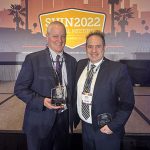
Medtech business models are increasingly needing to adapt to a healthcare environment where reimbursement for devices is linked to outcomes, and this requiring fundamental shift in how med-tech companies think and function.
“So far their devices are linked to episodic success. But now in an environment of outcomes-based reimbursement, you need to show that not only is your device effective in episodes of care, but also how it’s supporting and adding value to the consumer over the course of the treatment,” explains Williams.
And companies in the U.S., both small companies developing niche technologies, and big traditional companies, are looking at healthcare and asking ‘how can we do that.’ This challenge, combined with the dynamics of developing capabilities in emerging markets is making way for new business models and potential solutions, he adds. We present below some highlights from a chat that Medical Device Summit had with Williams.
On lessons from emerging markets driving innovation
When it came to tapping emerging markets, companies initially thought, I have this good technology. Let me take it to China, India or Brazil, sell what I have already developed. Now companies are realizing that it is not the same. These markets are distinct: India is different than China, which is very different than Brazil. Companies have started realizing that the products that I bring to market have to be provided in context culturally and from a healthcare standpoint to that market, addressing features, functions and pricing, all forcing companies to reevaluate their business models in these emerging markets.
Also, as the U.S. is moving toward a single payer system and aligning itself more with the norm around the world, companies are getting more nuanced in their approach in asking themselves questions such as: If this device works in a lower price point in an emerging market, can I bring it back to the U.S.? How will it work here? How can I link it to outcomes by focusing on selling an integrated solution?
On convergence of technologies
Williams referred to the Qualcomm Tricorder X PRIZE, a contest which encourages teams to create an automatic, non-invasive health diagnostics packaged into a single-portable device, capable of monitoring five vital signs (blood pressure, heart rate etc.) and diagnosing over a dozen medical conditions (whooping cough, hypertension, osteoporosis, HIV etc). And the device should weigh less than 5 pounds. The contest was announced by the X Prize Foundation in May 2011. Devices will be sent to the U.S. to be independently tested on patients during the winter and spring of 2015.
Williams says that the pace of this technology convergence is both challenging and threatening for the healthcare industry. Currently, there’s a single device for monitoring or diagnosing each one of these conditions, but the future would want it all in one device. As early as next year, many of these stand-alone devices may become obsolete.
On the other hand, because of the healthcare reforms in the U.S., millions of more Americans are expected to come into an already stretched and stressed healthcare system. So how can such technology convergence play a role in managing triage in the system?
On growth of the orthopedic device sector
The orthopedic industry slowed down between 2009 and 2011, as many patients opted out of undergoing elective surgeries such as knee implants due to economic reasons. So while there were thousands of diagnosis and recommendations for knee replacement surgeries, these patients have not presented themselves for the procedures, and have found other ways to deal with this. Now the demand is coming back, but the numbers that were lost a few years ago are yet to be compensated.
Another trend that orthopedic device makers are working on now is developing implants specific to the patients. Earlier, implants were just machined pieces of metal. Now with new technology and 3-D printing, implants are becoming highly patient-specific devices – which take into account the patient’s anatomy, musculature, vasculature, weight, lifestyle etc., into consideration, and design devices to take into account all these criteria.
On the effect of device tax
There are clearly two groups of stakeholders. The first group that includes device makers and market sector experts such as consultants and analysts view the tax as just another part of the larger healthcare reform legislation, as part of the cost of doing business. These companies are making some tweaks in their operations and are dealing with the tax payments well.
The other group of companies, and lobby groups are more strongly opposed to the tax. They feel the tax is hurting innovation and jobs and are a lot more aggressive in opposing it and hope that it will be repealed soon. Results from the November elections should have more clarity on this topic.
On overall med-tech trends that are in line with projections, exciting or concerning
In 2011, Williams co-authored a paper titled Owning the Disease, in which he described the need for device manufacturers to take a more holistic approach to bring integrated solutions to market. This is happening a lot faster than expected, largely because of the speed at which technology has evolved, both hardware and software. He expects this to continue and at a faster pace.
The unanticipated development is the device tax. No one expected this three years ago, and this is something that the industry now needs to works with. In Williams’ mind, the tax, while having a financial implication on med-tech companies, will not stop the advances that will occur.
Other trends he notices are the changing reimbursement landscape, and increasing consolidation in the industry. If a company embraces a particular technology, there then comes the question about which device or which diagnostic that technology with work best with. And this decision has a big impact on reimbursement for the technology. In the changing healthcare landscape, there is the concern that many medtech products will run the risk of being mere components in a broadened healthcare solution, where price and margins are limited.
Ultimately, innovation in the med-tech sector will happen at speed of technology, not at the speed of healthcare, says Williams. The biggest opportunity or the biggest challenge for med-tech players will be:
- Accelerating the pace of innovation, to keep up with that speed;
- Taking a holistic view of innovation – covering not just product, but the entire business model, and linking product innovation with business strategy and;
- Being smart about collaboration and partnership management. As the industry is working with the outcomes-based reimbursement model, the winners will be those who understand and identify good partners and align with them.





